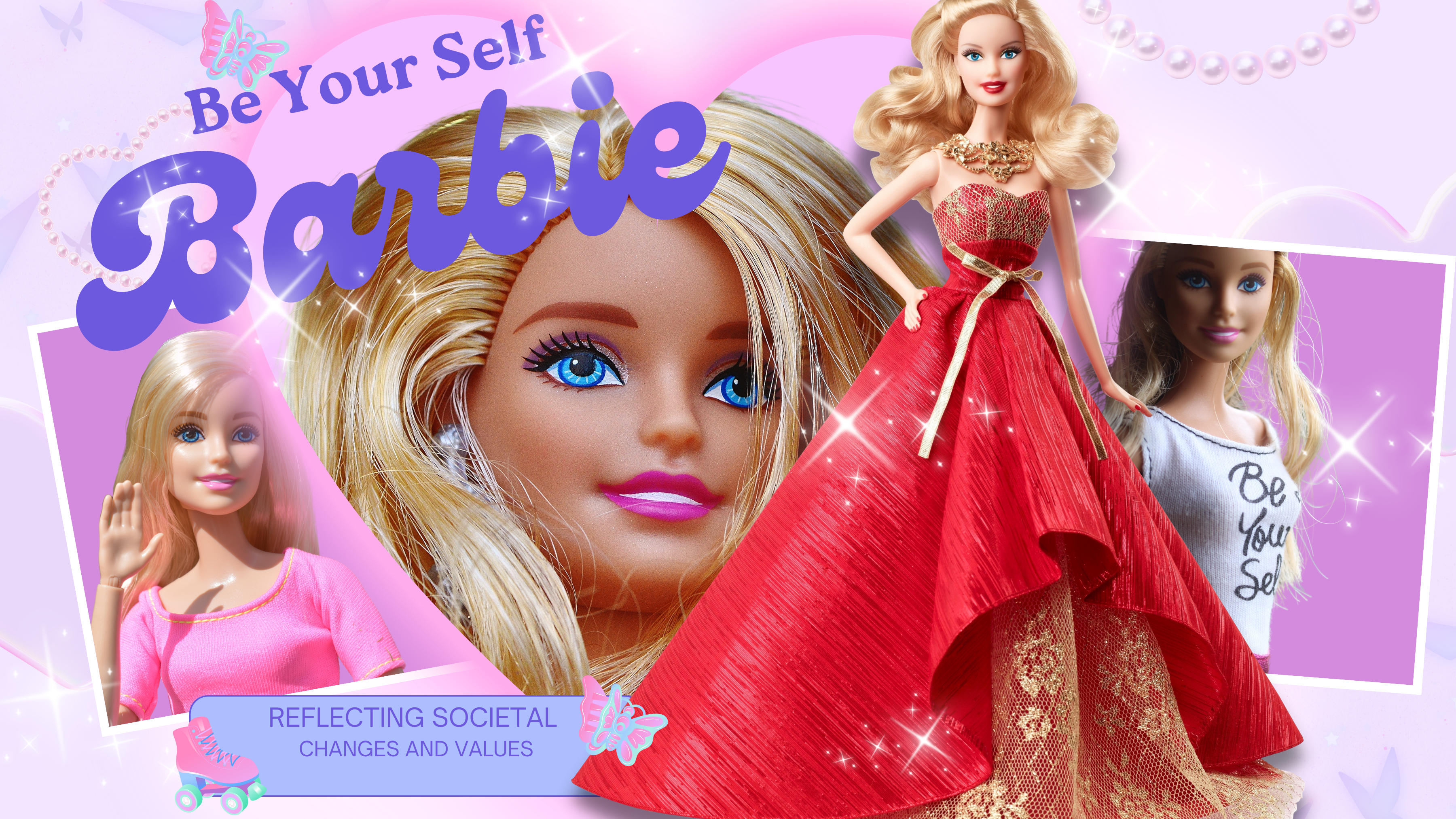
Barbie's Evolution
Reflecting Societal Changes and Values
In the sprawling tapestry of popular culture, few icons have left as indelible a mark as Barbie. Launched in 1959 by Ruth Handler, co-founder of Mattel, Inc., Barbie embarked on a journey that would not only redefine the toy industry but also mirror the ever-shifting currents of societal values and cultural mores. Born from Handler’s astute observation of her daughter’s imaginative play with paper dolls representing adult women, Barbie was envisioned as a conduit for dreams — a means for young girls to envision their futures in a world where their potential was vast and unbounded.


As Barbie emerged onto the scene, she did so during a time marked by both traditionalism and burgeoning change. The 1950s were characterized by prescribed gender roles and limited professional opportunities for women. However, Handler’s innovative vision aimed to defy these limitations, paving the way for a transformation that would unfold over decades. Barbie, with her adult-like features, stylish ensembles, and intricate accessories, captured the imagination of young girls across the nation. But beyond her playability, Barbie stood as a cultural touchstone that reflected the values and aspirations of the era.
At her core, Barbie was a mirror to the prevailing beauty standards of the time. Her svelte figure and distinct facial features encapsulated an idealized notion of femininity that was deeply ingrained in the societal consciousness. This embodiment of the “perfect” woman, albeit in plastic form, was a product of the norms and expectations of that era. She was, in many ways, a reflection of the cultural values that dictated women’s roles and appearances.
Barbie’s influence extended beyond her individual existence to the characters that joined her in the play world. Ken, introduced as Barbie’s boyfriend, was an attempt to humanize her and move her away from the sole realm of a sexualized adult figure. Midge Hadley, Barbie’s best friend, was brought into the fold to dispel criticisms that Barbie propagated unrealistic standards of beauty and femininity. These additions expanded the narrative possibilities of Barbie’s world and demonstrated a responsiveness to societal concerns.


Further diversifying the cast of characters, Mattel introduced Skipper Roberts, Barbie’s younger sister. This addition widened the age range of potential consumers and allowed for more nuanced storytelling. Skipper’s presence acknowledged that children of different ages engage with toys differently and highlighted the importance of representing various life stages.
As Barbie’s journey continued, her evolution intertwined with the evolving dynamics of society. The feminist movements of the 1960s and 1970s laid the groundwork for a new understanding of women’s roles and potential. Barbie, as a reflection of these shifting paradigms, began exploring diverse careers — from astronauts to doctors, presidents to scientists. This broadened scope mirrored the aspirations of the times, as women broke barriers and asserted their place in traditionally male-dominated fields.
The introduction and evolution of Barbie dolls have been closely intertwined with societal changes and values, particularly for young girls who grew up playing with these dolls. Here’s how Barbie’s impact on society and the values it represented evolved over time.
1960s-1970s: Aspirations and Careers
During this period, Barbie reflected the changing roles and aspirations of women in society. As more women entered the workforce and pursued diverse careers, Barbie’s character choices expanded to include professions such as doctor, astronaut, and pilot. Barbie encouraged young girls to dream big and consider a wide range of career possibilities beyond traditional gender roles.


1980s-1990s: Diversity and Inclusion
In response to criticisms about the doll’s unrealistic body proportions and lack of diversity, Mattel began introducing dolls with different ethnicities and skin tones, as well as dolls with various body types and features. This era saw the introduction of dolls like “Teresa” and “Christie,” which aimed to represent a more diverse range of girls and women.
2000s-Present: Body Image and Self-Expression
As discussions around body image gained prominence, Barbie faced scrutiny for promoting unrealistic beauty standards. In response, Mattel launched initiatives to address these concerns, including the introduction of dolls with different body shapes (curvy, tall, petite) and the “Barbie Fashionista” line, which showcased a variety of hairstyles, skin tones, and fashion styles. These changes aimed to promote body positivity and self-acceptance.


Empowerment and Identity
In recent years, Barbie has embraced empowerment and self-identity. The “Shero” line features dolls inspired by real-life influential women like Frida Kahlo, Amelia Earhart, and Malala Yousafzai, highlighting the importance of role models and diverse achievements. Barbie’s “You Can Be Anything” campaign encourages girls to imagine themselves in any role they aspire to, reinforcing the idea that their potential is limitless.
Challenging Gender Norms
Barbie has also taken steps to challenge traditional gender norms. The “Barbie Dreamhouse Adventures” animated series portrays Barbie and her friends engaging in a variety of activities that defy stereotypes, showcasing their intelligence, creativity, and problem-solving skills.


In part one of our series, we’ve embarked on a journey through Barbie’s evolution, observing how this iconic doll both shaped and was shaped by societal changes. From her inception as a reflection of beauty standards to the expansion of her world to accommodate diverse characters, Barbie’s narrative intertwined with the fabric of cultural values. Stay tuned for the subsequent parts of our series, where we’ll delve deeper into the ways in which Barbie has navigated identity, body image, and empowerment across different epochs.
Categories
Recent Posts
- Maximize Your Reach: Essential Email Marketing Dos and Don’ts for Success July 9, 2024
- Social Media Day 2024 June 30, 2024
- Navigating the World of Social Media Advertising June 20, 2024
- The Power of Visual Content in Marketing April 8, 2024
- Hip Hopper Alert: Easter Bunny Steals the Show with Sunglasses Stunt March 31, 2024
- The Super Bowl Ads 2024 February 12, 2024
- Serving Our Client’s Social Media Platforms Branded Content February 5, 2024
- Days of Future Past January 31, 2024
- The Art of Blending Human Intuition and Data-Driven Insights January 31, 2024
- Beyond Intuition January 30, 2024
Recent Comments